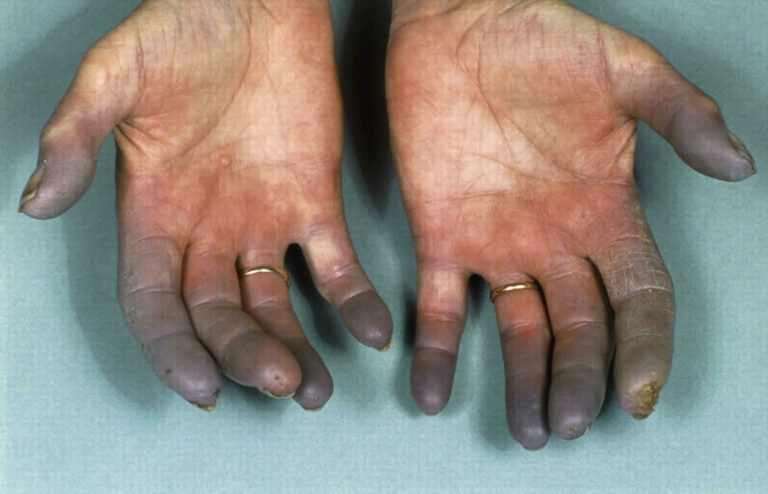Chagas Disease: Causes, Signs, and Symptoms
Author: Giselle Robel
Giselle Robel
Category: Health

Chagas disease is an inflammatory, infectious disease caused by the parasite Trypanosoma cruzi. This parasite is found in the feces of the triatomine (reduviid) bug. This bug is also known as the “kissing bug.” It is common in South America, Central America and Mexico, the primary home of the triatomine bug. Rare cases of Chagas disease have also been found in the southern United States.
Also called American trypanosomiasis, it can infect anyone. Left untreated, Chagas disease later can cause serious heart and digestive problems.
During the acute phase of infection, treatment of Chagas disease focuses on killing the parasite. In people who have a chronic Chagas disease, it’s no longer possible to kill the parasite. Treatment in later phase is about managing signs and symptoms. You can also take steps to prevent infection.
If untreated, infection is lifelong and can be life threatening.
The impact of Chagas disease is not limited to only rural areas of Latin America in which vector borne transmission (diseases transmitted by insects) occurs.
Chagas Disease Sign and Symptoms
Chagas disease can cause a sudden, brief illness (acute), or it may be a long- lasting (chronic) condition. Symptoms range from mild to severe, although many people don’t experience symptoms until the chronic stage.
Acute phase
The acute phase of Chagas disease, which lasts for weeks or months, is often symptom-free. When signs and symptoms do occur, they are usually mild and may include:
- Swelling at the infection site
- Fever
- Fatigue
- Rash
- Body aches
- Eyelid swelling
- Headache
- Loss of appetite
- Nausea, diarrhea or vomiting
- Swollen glands
- Enlargement of your liver or spleen
Signs and symptoms that develop during the acute phase usually go away on their own.
Chronic phase
Signs and symptoms of the chronic phase of Chagas disease may occur 10 to 20 years after initial infection, or they may never occur. In severe cases, Chagas disease signs and symptoms may include:
- Irregular heartbeat
- Heart failure
- Sudden cardiac arrest
- Difficulty swallowing due to enlarged esophagus
- Stomach pain or constipation due to enlarged colon
Causes
People can become infected in several ways. In areas where Chagas disease is common, the main way is through vectorborne transmission. The insect vectors are called triatomine bugs.
These blood-sucking bugs get infected with T. cruzi by biting an infected animal or person. Once infected, the bugs pass the parasites in their feces. The bugs are found in houses made from materials such as mud, adobe, straw, and palm thatch.
During the day, the bugs hide in crevices in the walls and roofs. During the night, when the inhabitants are sleeping, the bugs emerge. Because they tend to bite people's faces, triatomine bugs are also known as kissing bugs. After they bite and ingest blood, they defecate (poop) on the person.
The person can become infected if T. cruzi parasites in the bug feces enter the body through mucous membranes or breaks in the skin. The unsuspecting, sleeping person may accidentally scratch or rub the feces into the bite wound, eyes, or mouth.
People also can become infected through
- Congenital transmission (from a pregnant woman to her baby);
- Blood transfusions;
- Organ transplantation;
- Eating uncooked food that is contaminated with feces (poop) from infected triatomine bugs; and
- Accidental laboratory exposure.
It is generally considered safe to breastfeed even if the mother has Chagas disease. However, if the mother has cracked nipples or blood in the breast milk, she should pump and discard the milk until the nipples heal and the bleeding resolves.
It is not transmitted from person-to-person like a cold or the flu or through casual contact with infected people or animals.
Chagas Disease Treatment
Two approaches to therapy, that can be life-saving include:
Antiparasitic treatment, to kill the parasite; and
Symptomatic treatment, to manage the symptoms and signs of infection.
Antiparasitic treatment is most effective early in the course of infection, but is not limited to cases in the acute phase. In the United States, there are two types of treatments available.
Benznidazole is treatment use for children 2-12 years of age. Most people do not need to be hospitalized during treatment.
Risk factors
The following factors may increase your risk of getting Chagas disease:
- Living in poor rural areas of Central America, South America and Mexico
- Living in a residence that contains triatomine bugs
- Receiving a blood transfusion or organ transplant from a person who carries the infection
It’s rare for travelers to the at-risk areas in South America, Central America and Mexico to catch Chagas disease because travelers tend to stay in well- constructed buildings, such as hotels.
Complications
If Chagas disease progresses to the long-lasting (chronic) phase, serious heart or digestive complications may occur. These may include:
- Heart failure – Heart failure occurs when your heart becomes so weak or stiff that it can’t pump enough blood to meet your body’s needs.
- Enlargement of the esophagus (megaesophagus) – A rare condition caused by abnormal widening (dilation) of your esophagus. This can result in difficulty with swallowing and digestion.
- Enlargement of the colon (megacolon) – Megacolon occurs when your colon becomes abnormally dilated, causing stomach pain, swelling and severe constipation.
Prevention
If you live in a high-risk area for Chagas disease, these steps can help you prevent infection:
- Avoid sleeping in a mud, thatch or adobe house – these types of residences are more likely to harbor triatomine bugs.
- Use insecticide-soaked netting over your bed – when sleeping in thatch, mud or adobe houses.
- And use insecticides – to remove insects from your residence.
- Also, use insect repellent – on exposed skin.













